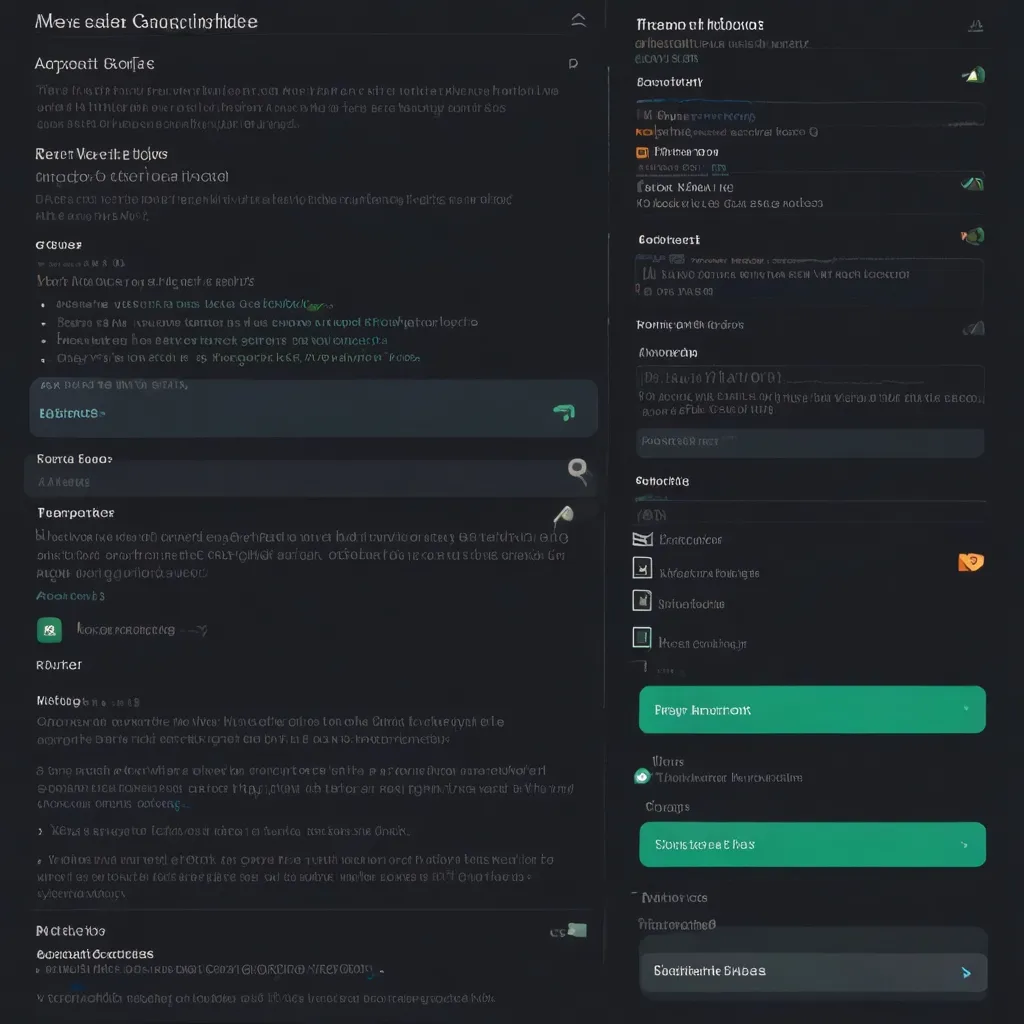Serverless computing has reshaped how I build and deploy web applications. By abstracting away server management, it allows me to focus purely on writing code that responds to events. This shift means I no longer worry about provisioning servers or scaling infrastructure. Instead, I deploy functions that automatically handle traffic spikes. The cost model aligns perfectly with usage, so I only pay for the compute time my functions consume. This approach has made backend development more accessible and efficient for dynamic web apps.
When I first started with serverless, the event-driven nature felt intuitive. Functions execute in response to HTTP requests, database changes, or file uploads. Cloud providers like AWS, Google Cloud, and Azure manage the underlying infrastructure. I remember deploying my initial Lambda function and being amazed at how seamlessly it scaled during peak loads. The stateless design ensures each invocation is independent, which simplifies debugging and testing.
Implementing serverless functions begins with defining the business logic. For a user registration feature, I write a function that processes incoming data. Here is a detailed example using Node.js for AWS Lambda. This function handles user sign-ups, hashes passwords, and stores data in a database.
const bcrypt = require('bcryptjs');
const { v4: uuidv4 } = require('uuid');
exports.handler = async (event) => {
// Parse the incoming request body
const { email, password, name } = JSON.parse(event.body);
// Validate input fields
if (!email || !password || !name) {
return {
statusCode: 400,
headers: { 'Content-Type': 'application/json' },
body: JSON.stringify({ error: 'Missing required fields' })
};
}
try {
// Hash the password for security
const hashedPassword = await bcrypt.hash(password, 10);
const userId = uuidv4();
// Simulate storing user in a database
const user = {
id: userId,
email: email,
name: name,
password: hashedPassword,
createdAt: new Date().toISOString()
};
// In a real scenario, save to DynamoDB or another datastore
// await db.put({ TableName: 'Users', Item: user }).promise();
return {
statusCode: 201,
headers: { 'Content-Type': 'application/json' },
body: JSON.stringify({
message: 'User registered successfully',
userId: user.id
})
};
} catch (error) {
console.error('Registration error:', error);
return {
statusCode: 500,
body: JSON.stringify({ error: 'Internal server error' })
};
}
};
Integrating this function with a frontend involves making HTTP requests from the client side. I use fetch or Axios to call the function endpoint. Here is how I might handle user registration in a React component.
import React, { useState } from 'react';
const RegisterForm = () => {
const [formData, setFormData] = useState({ email: '', password: '', name: '' });
const [loading, setLoading] = useState(false);
const [message, setMessage] = useState('');
const handleSubmit = async (e) => {
e.preventDefault();
setLoading(true);
try {
const response = await fetch(process.env.REACT_APP_REGISTER_URL, {
method: 'POST',
headers: { 'Content-Type': 'application/json' },
body: JSON.stringify(formData)
});
const data = await response.json();
if (response.ok) {
setMessage('Registration successful!');
// Redirect or update state
} else {
setMessage(data.error || 'Registration failed');
}
} catch (error) {
setMessage('Network error. Please try again.');
} finally {
setLoading(false);
}
};
return (
<form onSubmit={handleSubmit}>
<input
type="text"
placeholder="Name"
value={formData.name}
onChange={(e) => setFormData({...formData, name: e.target.value})}
required
/>
<input
type="email"
placeholder="Email"
value={formData.email}
onChange={(e) => setFormData({...formData, email: e.target.value})}
required
/>
<input
type="password"
placeholder="Password"
value={formData.password}
onChange={(e) => setFormData({...formData, password: e.target.value})}
required
/>
<button type="submit" disabled={loading}>
{loading ? 'Registering...' : 'Register'}
</button>
{message && <p>{message}</p>}
</form>
);
};
export default RegisterForm;
Configuration is a critical step in serverless development. I use the Serverless Framework to define my functions, triggers, and permissions in a YAML file. This setup ensures consistency across environments and simplifies deployments.
# serverless.yml for user service
service: user-management-api
provider:
name: aws
runtime: nodejs18.x
region: us-east-1
stage: ${opt:stage, 'dev'}
environment:
USERS_TABLE: ${self:service}-${sls:stage}
iamRoleStatements:
- Effect: Allow
Action:
- dynamodb:PutItem
- dynamodb:GetItem
- dynamodb:UpdateItem
- dynamodb:DeleteItem
Resource: "arn:aws:dynamodb:${aws:region}:*:table/${self:provider.environment.USERS_TABLE}"
functions:
registerUser:
handler: src/handlers/register.handler
events:
- http:
path: /register
method: post
cors: true
getUser:
handler: src/handlers/getUser.handler
events:
- http:
path: /user/{id}
method: get
cors: true
resources:
Resources:
UsersTable:
Type: AWS::DynamoDB::Table
Properties:
TableName: ${self:provider.environment.USERS_TABLE}
AttributeDefinitions:
- AttributeName: userId
AttributeType: S
KeySchema:
- AttributeName: userId
KeyType: HASH
BillingMode: PAY_PER_REQUEST
Local development is essential for testing functions before deployment. I use tools like serverless-offline to emulate the AWS environment on my machine. This practice helps me catch errors early and iterate quickly.
// Local setup with Express.js for testing
const express = require('express');
const app = express();
app.use(express.json());
// Mock the register function
app.post('/register', async (req, res) => {
const { email, password, name } = req.body;
// Simulate async operation
try {
const hashedPassword = await bcrypt.hash(password, 10);
const user = { id: 'mock-id', email, name };
res.status(201).json({ message: 'User created', userId: user.id });
} catch (error) {
res.status(500).json({ error: 'Registration failed' });
}
});
// Export for serverless-http if needed
const serverless = require('serverless-http');
module.exports.handler = serverless(app);
// For local development, run with: node local.js
if (require.main === module) {
app.listen(3000, () => console.log('Local server running on port 3000'));
}
Performance optimization is a area where I spent considerable time. Cold starts, where a function initializes from scratch, can cause latency. To mitigate this, I use provisioned concurrency in AWS Lambda, which keeps functions warm. Additionally, I minimize deployment package sizes by excluding unnecessary files.
// Optimized function with connection pooling for databases
const { Pool } = require('pg');
const pool = new Pool({
host: process.env.DB_HOST,
user: process.env.DB_USER,
password: process.env.DB_PASSWORD,
database: process.env.DB_NAME,
max: 20, // maximum number of clients in the pool
idleTimeoutMillis: 30000,
connectionTimeoutMillis: 2000,
});
exports.handler = async (event) => {
const client = await pool.connect();
try {
const { id } = event.pathParameters;
const result = await client.query('SELECT * FROM users WHERE id = $1', [id]);
if (result.rows.length === 0) {
return { statusCode: 404, body: JSON.stringify({ error: 'User not found' }) };
}
return {
statusCode: 200,
headers: { 'Content-Type': 'application/json' },
body: JSON.stringify(result.rows[0])
};
} catch (error) {
console.error('Database error:', error);
return { statusCode: 500, body: JSON.stringify({ error: 'Query failed' }) };
} finally {
client.release();
}
};
Error handling in serverless functions requires robust strategies. I implement retry mechanisms for transient failures and use dead letter queues to capture failed invocations. Logging is crucial; I integrate with CloudWatch or similar services to monitor function behavior.
// Enhanced error handling with retries
const axios = require('axios');
exports.handler = async (event) => {
const maxRetries = 3;
let retries = 0;
while (retries < maxRetries) {
try {
const response = await axios.post('https://api.example.com/process', event.body);
return {
statusCode: 200,
body: JSON.stringify(response.data)
};
} catch (error) {
retries++;
if (retries === maxRetries) {
// Send to dead letter queue or log for further analysis
console.error('Final attempt failed:', error);
return {
statusCode: 500,
body: JSON.stringify({ error: 'Service unavailable' })
};
}
// Wait before retrying (exponential backoff could be added)
await new Promise(resolve => setTimeout(resolve, 1000 * retries));
}
}
};
Security is a top priority in my serverless applications. I adhere to the principle of least privilege by assigning minimal permissions to function roles. Environment variables store sensitive data like API keys, and I always validate inputs to prevent common attacks such as SQL injection.
// Secure function with input validation and environment variables
const Joi = require('joi');
const userSchema = Joi.object({
email: Joi.string().email().required(),
password: Joi.string().min(8).required(),
name: Joi.string().max(100).required()
});
exports.handler = async (event) => {
const { error, value } = userSchema.validate(JSON.parse(event.body));
if (error) {
return {
statusCode: 400,
body: JSON.stringify({ error: error.details[0].message })
};
}
// Use environment variable for database connection
const dbUrl = process.env.DATABASE_URL;
// Proceed with secure operations...
};
In my experience, serverless functions excel in handling variable workloads. I once built a notification system that sent emails based on user actions. During high traffic, the functions scaled without any intervention on my part. This reliability allowed me to deliver features faster and with fewer resources.
Another advantage is the ease of updates. I can deploy a single function without affecting the entire application. This modularity supports continuous integration and delivery pipelines. I often use GitHub Actions to automate deployments whenever I push code to the main branch.
# Example GitHub Actions workflow for serverless deployment
name: Deploy Serverless
on:
push:
branches: [ main ]
jobs:
deploy:
runs-on: ubuntu-latest
steps:
- uses: actions/checkout@v2
- name: Setup Node.js
uses: actions/setup-node@v2
with:
node-version: '18'
- name: Install dependencies
run: npm install
- name: Deploy to AWS
run: npx serverless deploy --stage prod
env:
AWS_ACCESS_KEY_ID: ${{ secrets.AWS_ACCESS_KEY_ID }}
AWS_SECRET_ACCESS_KEY: ${{ secrets.AWS_SECRET_ACCESS_KEY }}
Testing serverless functions involves unit tests for business logic and integration tests for API endpoints. I use frameworks like Jest to ensure code quality. Mocking external services helps isolate function behavior.
// Unit test for the register function with Jest
const { handler } = require('./register');
const bcrypt = require('bcryptjs');
jest.mock('bcryptjs');
test('should register a user successfully', async () => {
bcrypt.hash.mockResolvedValue('hashedPassword');
const event = {
body: JSON.stringify({
email: '[email protected]',
password: 'password123',
name: 'Test User'
})
};
const response = await handler(event);
expect(response.statusCode).toBe(201);
const body = JSON.parse(response.body);
expect(body.message).toBe('User registered successfully');
});
test('should return error for invalid input', async () => {
const event = {
body: JSON.stringify({ email: 'invalid' }) // missing fields
};
const response = await handler(event);
expect(response.statusCode).toBe(400);
});
Serverless architecture encourages building composable systems. I design functions to handle specific tasks, then chain them together using event bridges or step functions. For instance, after a user registers, I might trigger a welcome email function and a analytics logging function.
// Example of function composition using AWS Step Functions
// Defined in serverless.yml
stepFunctions:
stateMachines:
userOnboarding:
name: userOnboarding
definition:
Comment: "Orchestrates user registration and follow-up actions"
StartAt: RegisterUser
States:
RegisterUser:
Type: Task
Resource: "arn:aws:lambda:us-east-1:123456789012:function:registerUser"
Next: SendWelcomeEmail
SendWelcomeEmail:
Type: Task
Resource: "arn:aws:lambda:us-east-1:123456789012:function:sendWelcomeEmail"
Next: LogAnalytics
LogAnalytics:
Type: Task
Resource: "arn:aws:lambda:us-east-1:123456789012:function:logAnalytics"
End: true
Cost management is straightforward with serverless. I monitor usage through cloud provider dashboards and set up alerts for unexpected spikes. The pay-per-execution model means I avoid charges for idle time, which is ideal for applications with irregular traffic patterns.
I recall a project where serverless reduced operational costs by over 60% compared to traditional hosting. The ability to scale down to zero during off-hours was a game-changer. This efficiency allowed me to allocate more budget toward feature development and user experience improvements.
Debugging distributed serverless applications can be challenging. I use structured logging and tracing tools like AWS X-Ray to follow requests across functions. This visibility helps identify bottlenecks and errors in complex workflows.
// Adding tracing to a function
const AWSXRay = require('aws-xray-sdk');
const AWS = AWSXRay.captureAWS(require('aws-sdk'));
exports.handler = async (event) => {
const segment = AWSXRay.getSegment();
const subsegment = segment.addNewSubsegment('UserProcessing');
try {
// Business logic here
subsegment.close();
return { statusCode: 200, body: 'Success' };
} catch (error) {
subsegment.addError(error);
subsegment.close();
return { statusCode: 500, body: 'Error' };
}
};
Serverless functions have evolved to support longer execution times and larger memory allocations. This flexibility makes them suitable for a wider range of use cases, from image processing to data transformation. I recently used Lambda to handle video encoding tasks that ran for several minutes.
The community around serverless is vibrant, with numerous open-source tools and plugins. I often contribute to projects that enhance development workflows. Sharing configurations and best practices has helped me learn from others and avoid common pitfalls.
Looking ahead, I see serverless becoming the default for many web applications. Its simplicity and scalability empower small teams to build robust systems. As tools mature, I expect even smoother integration with frontend frameworks and databases.
In conclusion, serverless functions offer a powerful paradigm for dynamic web applications. My journey with them has been marked by increased agility and reduced overhead. By embracing this model, I can deliver features faster while maintaining high performance and security. The code examples and strategies shared here reflect lessons from real-world projects, and I hope they provide a solid foundation for your own implementations.






